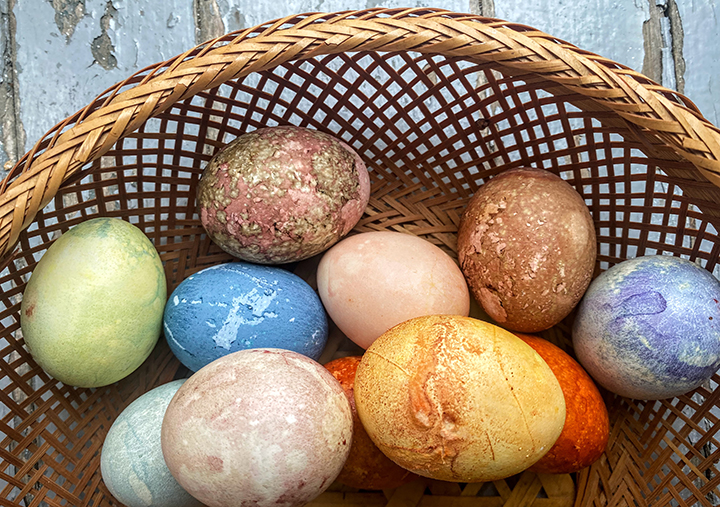
I love to make natural dyes and I love to naturally dye easter eggs. When my kids were super little they didn’t mind waiting overnight for the eggs to change color, but as they’ve gotten older and heard the siren song of the grocery store kits, they have lost interest in the natural dye process and requested the tablets more and more. (They usually humor me a little bit anyway…) I stumbled on this method by accident really, when I was making my conventional naturally dyed eggs post I was muttering to myself about how much better turmeric dye bath with alcohol is. I happened to have some already prepared so I tested it out of curiosity. It worked so much better than the water based dye- the color was bright and pure yellow (its a muddier yellow/ brown with the water method) and the best part was, that it stained the egg instantly. There was no leaving it in dye overnight. I had until this point always used rubbing alcohol for my turmeric ink/ dye, but eggshells are porous so this didn’t feel like a good idea if there was a hard boiled egg inside. (My test egg was a hollow shell for cascarones.) So made a new batch with cheap vodka. It worked great. (I also tested it on a hard boiled egg and it didn’t taste like vodka.) I started researching and testing other colors and dye stuffs to see if I could make a whole rainbow of alcohol based dyes and I’ll continue to test, but I found a ton of great options. Keep reading for specifics!
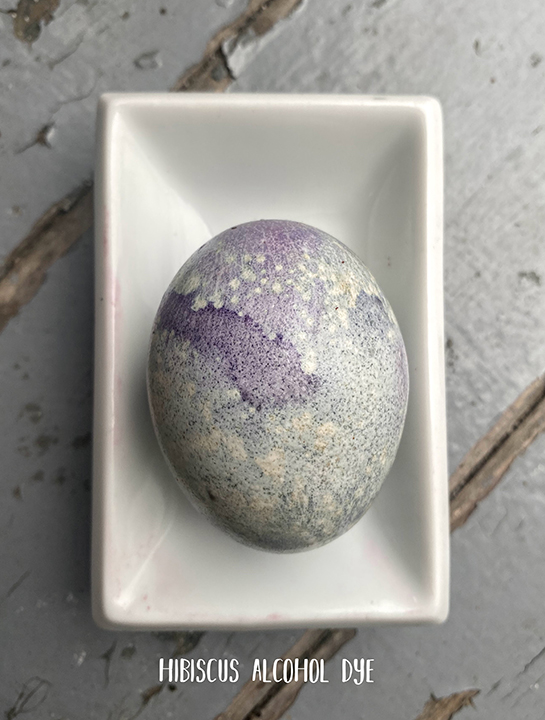
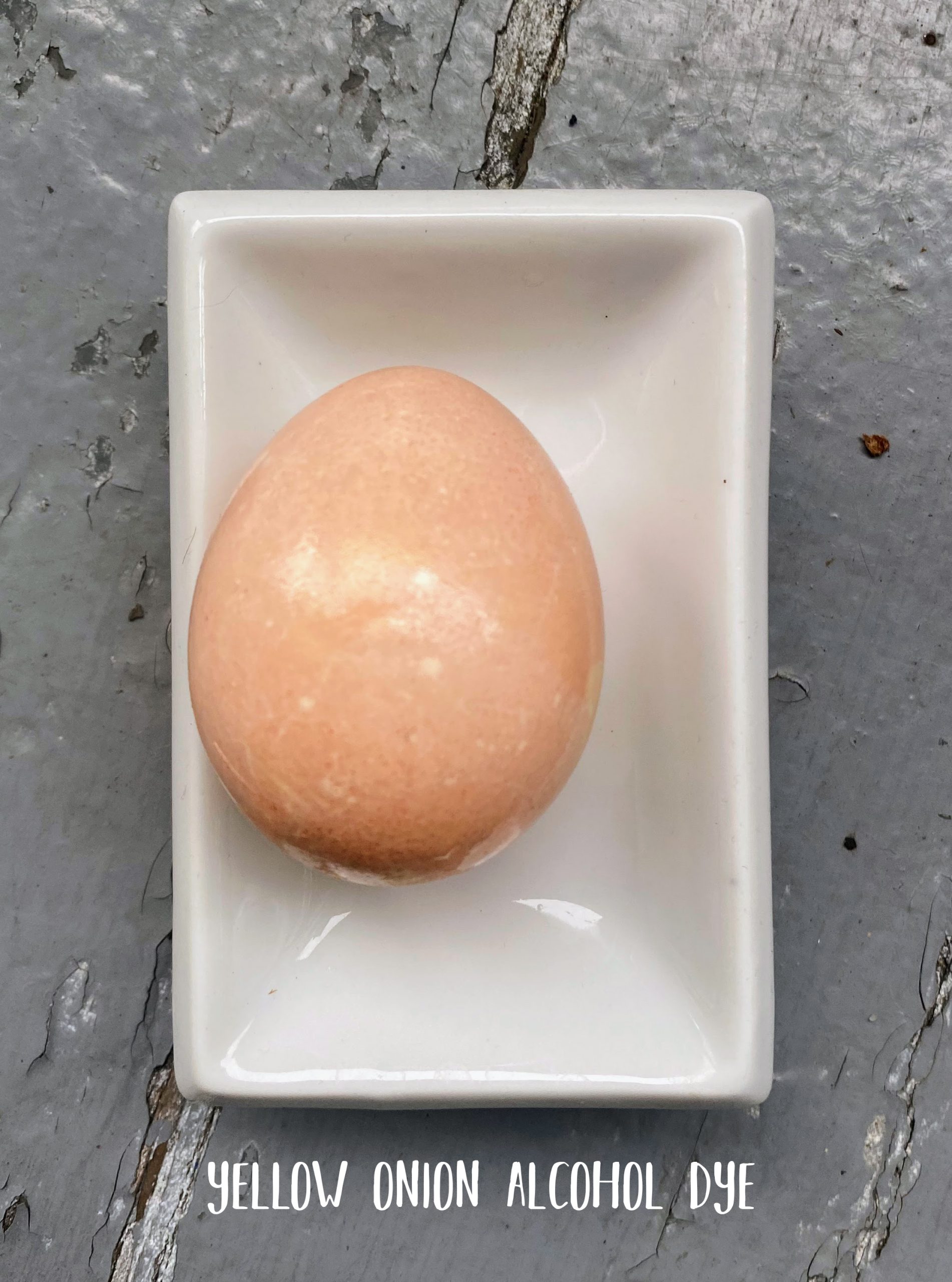
Natural Alcohol-Based Egg Dyes
By a handle of super cheap vodka and you’ll be able to make all the colors. (Like undrinkable cheap…) I feel like this goes without saying, but don’t let kids drink or taste the dyes. Or adults really, I don’t imagine turmeric-egg flavored vodka is very good. Some of the dye stuffs that we use with a water base work well with alcohol too, some don’t. Cabbage was a total bust with alcohol, it turned deep purple, but didn’t dye the eggs at all. Generally I found dried dye stuffs generally worked better, hibiscus produced amazing results and doesn’t do much with water. Beets and onion skins worked, but produced different results than they do with water. All of the colors benefit from sitting uncovered on the counter and evaporating for a few days, it reduces the liquid and concentrates the pigment. I have listed measurements, but I tend to folk measure- just kind of eyeballing everything. you can always add more dyestuff to get a darker color! The other nice thing about this dye base is that it dried much faster than water.

Light Blue– Dried Blue Butterfly Pea Flower
- 1 generous handful of dried blue butterfly pea flowers
- 1/2 cup vodka
Drop the dried flowers into a mason jar and add the vodka. Cap and shake, then remove the lid and sit it on the counter to allow some of the liquid to evaporate and the color to concentrate. Strain out the flowers after desired color has been achieved. You can dip eggs in, or use a foam brush to paint the dye on.
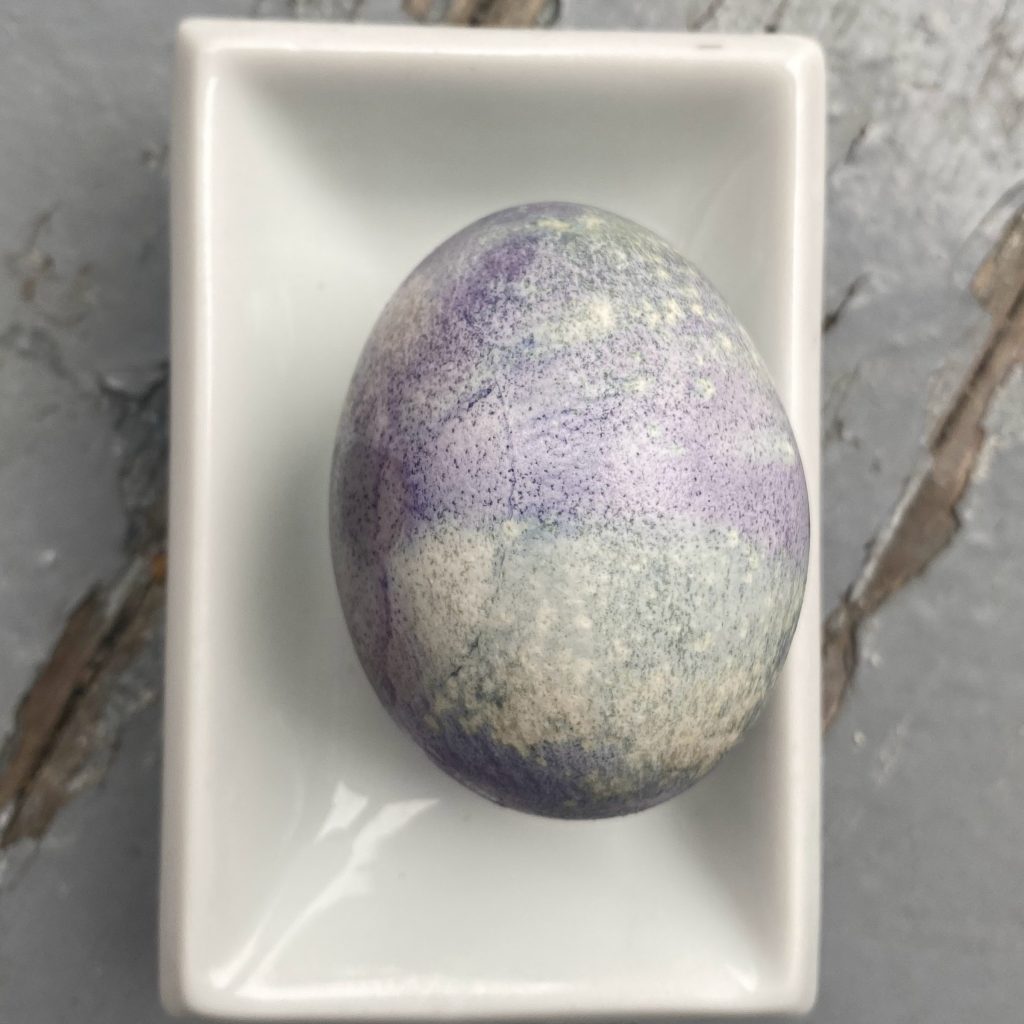
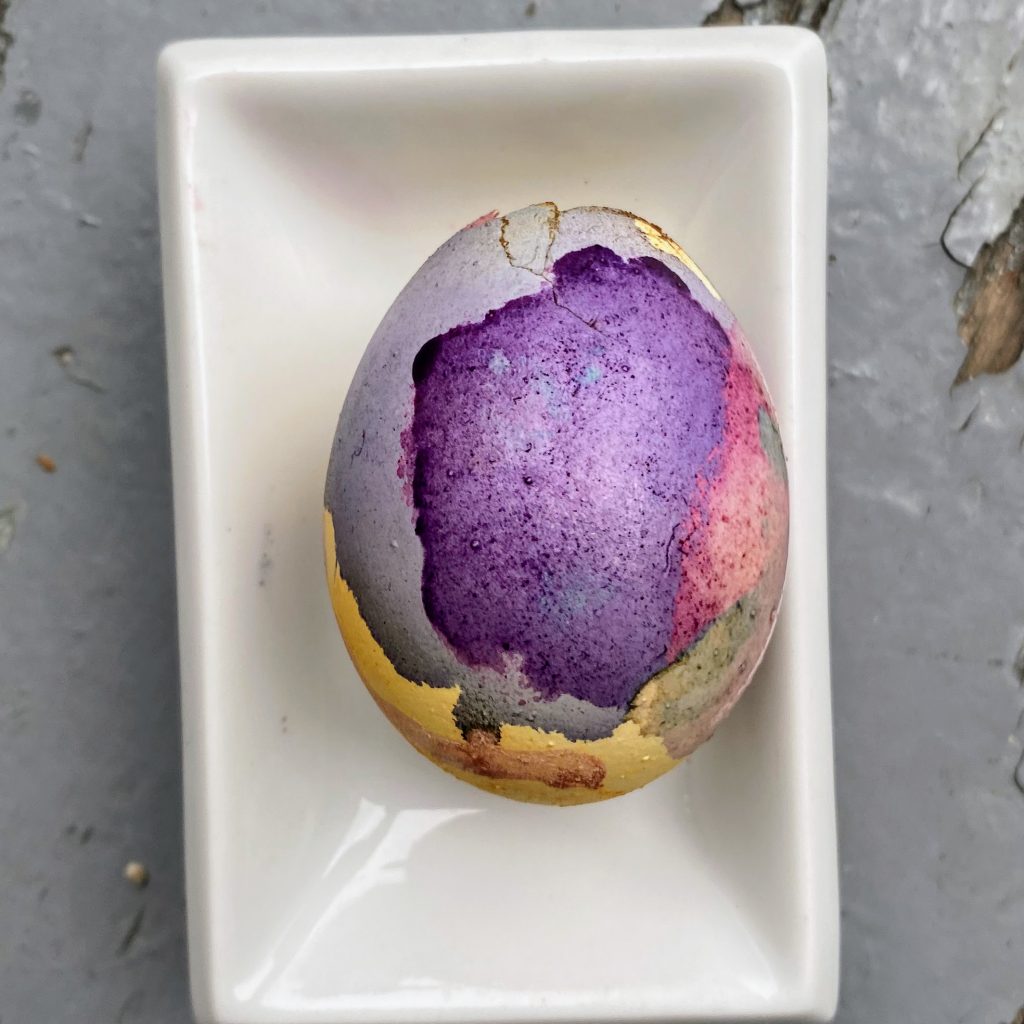
Pale Purple Blue Green- Dried Hibiscus Flowers
This was my absolute favorite- with one dip there were shades of blue purple and green and when I painted the dye on with a foam brush I was able to get a really intense color with two coats.
- 1 generous handful of dried hibiscus flowers
- 1/2 cup vodka
Drop the dried flowers into a mason jar and add the vodka. Cap and shake, then remove the lid and sit it on the counter to allow some of the liquid to evaporate and the color to concentrate. Strain out the flowers after desired color has been achieved. You can dip eggs in, or use a foam brush to paint the dye on.
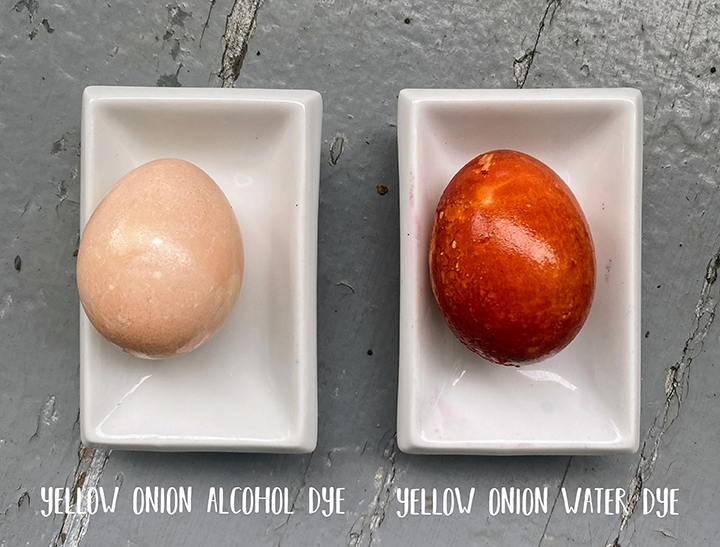
Peach- Yellow Onion Skins
This produced a much paler result than it does with water, but the color was so lovely I decided it was a success. I did however use the same onion skins that I made a water based dye with, so at some point I’ll repeat it with fresh onion skins and see if that changes things.
- 1 cup yellow onion skins
- 1/2 cup vodka
Drop the dried onion skins into a mason jar and add the vodka. Cap and shake, then remove the lid and sit it on the counter to allow some of the liquid to evaporate and the color to concentrate. Strain out the skins after desired color has been achieved. This one works better as a dip.
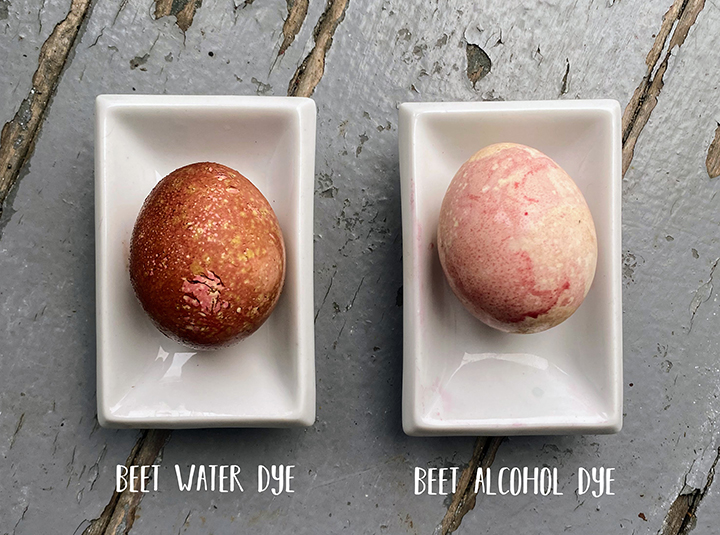
Pink- Beets
Beets produced a much lighter pink in an alcohol base, but a much nicer color in my opinion. They also hold the color and don’t turn brownish gray the way the water based dye does as it oxidizes. I suspect this color will get deeper as I evaporate more of the alcohol too.
- 1 cup chopped beets
- 1/2 cup vodka
Chop up your beets as much as you have patience for and drop them into a mason jar. Pour in the vodka. Cap and shake, then remove the lid and sit on the counter to allow some of the liquid to evaporate and the color to concentrate. Strain out the beets after desired color has been achieved. You can dip eggs in, or use a foam brush to paint the dye on.


Yellow- Turmeric
- 1 tsp turmeric
- 1/2 cup vodka
Add the vodka to a mason jar and stir in the turmeric. Cap and shake, then allow to sit for a few days covered so the color can concentrate. Strain out the turmeric after desired color has been achieved. (Real talk- I never do this, you have to use a coffee filter because the spice is so fine and as long as you don’t mind a little sludge at the bottom of the dye it doesn’t really hurt anything.) You can dip eggs in, or use a foam brush to paint the dye on– this is another on that responds especially well to painting. You can also sprinkle baking soda on the egg while its wet and it will go orange-y. You can add baking soda to the dye as well, and the dye will turn orange, but the egg color won’t change much.
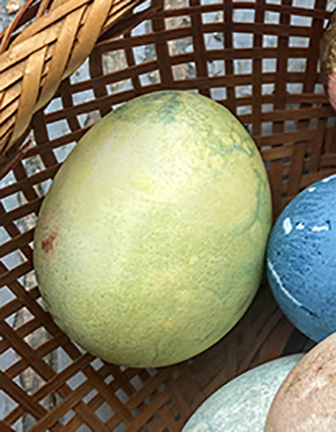
Green- Blue Butterfly Pea + Turmeric
- Turmeric Dye
- Blue Butterfly Pea Dye
I was worried this wouldn’t work because the blue butterfly pea dye isn’t as dark as the cabbage, but it produced a nice green egg. Make sure you let the egg dry fully between baths in the different dyes. I did blue, then yellow, then blue again to achieve this color.


Bonus… Elderberry and Beet!
I water dyed an elderberry egg and wasn’t that excited about it. (Using the leftover berries from elderberry syrup making) but then I popped it into the beet alcohol dye and it is stunning! The alcohol didn’t degrade the layer of water dye at all (which I was worried it might) The elderberry portions are more green than this picture reflects– you can see it better in the title image.
All of the colors benefit from a little bit of vegetable oil rubbed over the shell when dry- it brings out the subtle variations in color.
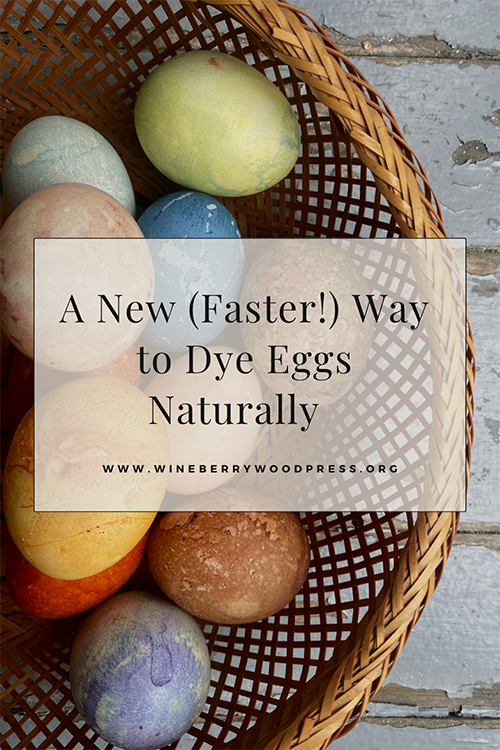
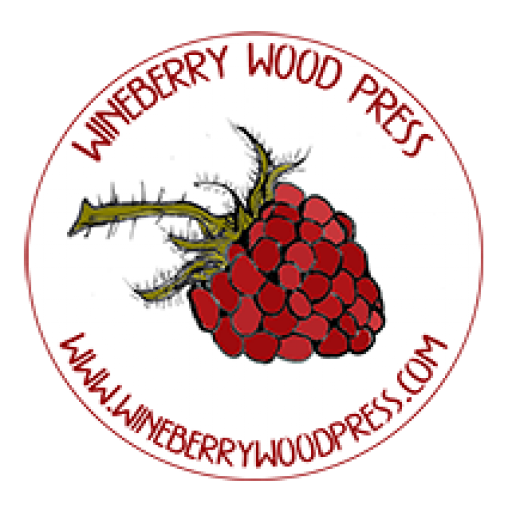
[…] the dye bath after it cools down but the color will be much lighter and muddier. I am going to do a separate post on using an alcohol base as it’s both brighter and […]